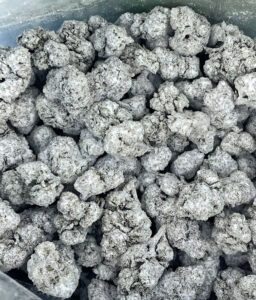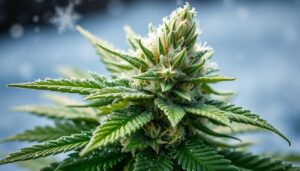In the vast and intricate world of alkaloids, one compound stands out for its intriguing properties and potential health benefits: Paynantheine. This lesser-known alkaloid, found primarily in the leaves of the Mitragyna speciosa tree, commonly known as kratom, has captured the attention of researchers and enthusiasts alike. Join us on a journey as we delve into the depths of this fascinating alkaloid, unraveling its mysteries and exploring the hidden gems it has to offer.
Origins and Discovery
Paynantheine was first isolated and identified in the early 1990s by a team of researchers led by Dr. Hiromitsu Takayama in Japan. The discovery was part of a broader effort to study the alkaloid profile of kratom, a tropical evergreen tree native to Southeast Asia. While kratom has been used for centuries in traditional medicine practices, it wasn’t until relatively recently that scientists began to unravel the complex chemical composition of its leaves.
Chemical Structure and Properties
Chemically, paynantheine belongs to the group of indole alkaloids, which are characterized by a core structure containing an indole ring. Its molecular formula is C23H28N2O5, and its molecular weight is 408.48 g/mol. Paynantheine is structurally related to another well-known kratom alkaloid, mitragynine, sharing similar pharmacological properties but exhibiting distinct effects on the body.
Pharmacological Effects
Research into the pharmacological effects of paynantheine is still in its early stages, but preliminary studies suggest that it may possess a range of interesting properties. Like mitragynine, paynantheine is believed to interact with opioid receptors in the brain, albeit with different affinities and mechanisms of action. Some research indicates that paynantheine may exhibit analgesic (pain-relieving) and antinociceptive (pain-blocking) effects, potentially making it a valuable compound for the treatment of chronic pain conditions.
Potential Health Benefits
While more research is needed to fully understand the therapeutic potential of paynantheine, preliminary findings suggest that it may offer several health benefits. In addition to its analgesic properties, paynantheine has been studied for its potential anti-inflammatory and antioxidant effects. These properties could make it a promising candidate for the development of new treatments for conditions such as arthritis, inflammatory bowel disease, and neurodegenerative disorders.
Safety and Side Effects
As with any substance, it’s important to consider the safety profile of paynantheine, especially given its association with kratom. While kratom has been used safely for centuries in Southeast Asia, there have been reports of adverse effects and even fatalities associated with its use, particularly when consumed in high doses or in combination with other substances. As such, caution should be exercised when using products containing paynantheine or other kratom alkaloids, and it’s essential to consult with a healthcare professional before beginning any new supplement regimen.
Legality and Regulation
The legal status of kratom and its alkaloids, including paynantheine, varies widely from country to country and even within different states or regions. In some places, kratom is classified as a controlled substance or banned outright, while in others, it is legal for personal use or even regulated as a dietary supplement. It’s essential to familiarize yourself with the laws and regulations governing kratom in your area before purchasing or using products containing paynantheine.
Exploring Alternative Uses
Beyond its potential medicinal properties, paynantheine may also have applications in other fields, including the pharmaceutical and agricultural industries. Researchers are exploring ways to isolate and purify paynantheine for use in the development of new drugs, as well as investigating its potential as a natural pesticide or herbicide. These alternative uses could open up exciting new avenues for exploration and innovation in the future.
Final Thoughts:
In conclusion, paynantheine is a fascinating alkaloid with a wealth of potential applications and benefits. While much remains to be discovered about its pharmacological effects and mechanisms of action, preliminary research suggests that it may offer promising therapeutic properties, particularly in the treatment of pain and inflammation. However, it’s essential to approach paynantheine and other kratom alkaloids with caution and to prioritize safety when using products containing these compounds. With further research and exploration, paynantheine may prove to be a valuable addition to the toolkit of modern medicine and agriculture, unlocking hidden gems of potential along the way.
Reference:
- Cinosi, E., Martinotti, G., Simonato, P., Singh, D., Demetrovics, Z., Román-Urrestarazu, A., … & Corazza, O. (2015). Following “the roots” of kratom (mitragyna speciosa): the evolution of an enhancer from a traditional use to increase work and productivity in southeast asia to a recreational psychoactive drug in western countries. Biomed Research International, 2015, 1-11. https://doi.org/10.1155/2015/968786
- Eastlack, S., Cornett, E., & Kaye, A. (2020). Kratom—pharmacology, clinical implications, and outlook: a comprehensive review. Pain and Therapy, 9(1), 55-69. https://doi.org/10.1007/s40122-020-00151-x
- Gonçalves, J., Luís, Â., Gallardo, E., & Duarte, A. (2021). Psychoactive substances of natural origin: toxicological aspects, therapeutic properties and analysis in biological samples. Molecules, 26(5), 1397. https://doi.org/10.3390/molecules26051397
- Gutridge, A., Robins, M., Cassell, R., Uprety, R., Mores, K., Ko, M., … & Rijn, R. (2020). G protein‐biased kratom‐alkaloids and synthetic carfentanil‐amide opioids as potential treatments for alcohol use disorder. British Journal of Pharmacology, 177(7), 1497-1513. https://doi.org/10.1111/bph.14913
- Kruegel, A., Uprety, R., Grinnell, S., Langreck, C., Pekarskaya, E., Rouzic, V., … & Sameš, D. (2019). 7-hydroxymitragynine is an active metabolite of mitragynine and a key mediator of its analgesic effects. Acs Central Science, 5(6), 992-1001. https://doi.org/10.1021/acscentsci.9b00141
- Tanna, R., Nguyen, J., Hadi, D., Manwill, P., Flores‐Bocanegra, L., Layton, M., … & Paine, M. (2022). Clinical pharmacokinetic assessment of kratom (mitragyna speciosa), a botanical product with opioid-like effects, in healthy adult participants. Pharmaceutics, 14(3), 620. https://doi.org/10.3390/pharmaceutics14030620
- Zhang, M., Sharma, A., León, F., Avery, B., Kjelgren, R., McCurdy, C., … & Pearson, B. (2022). Plant growth and phytoactive alkaloid synthesis in kratom [mitragyna speciosa (korth.)] in response to varying radiance. Plos One, 17(4), e0259326. https://doi.org/10.1371/journal.pone.0259326






